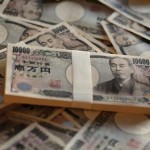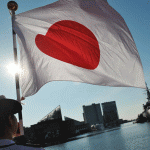Profile of Japan’s yen – major economic reports
This lesson will cover the following
- Major economic reports
- GDP
- Current account
- Industrial production
- Others…
Major economic reports released by Japan
Gross domestic product
GDP represents the total monetary value of all goods and services produced in Japan over a specific period, or, in other words, the size of its economy. It comprises expenditure made by households, business and government sectors, as well as net foreign purchases. Rapid economic growth is usually considered conducive to inflation, while low or negative growth signals a weak economy or a recession. The report on gross domestic product carries a lot of weight for currency traders. Because it evidences growth in a productive economy (or contraction in an unproductive one), traders view a higher growth rate as an indication that interest rates are likely to be raised.
Current account
 The current account represents the sum of the balance of trade, net current transfers (cash transfers) and net income from abroad (earnings from investments made abroad plus money sent by individuals working abroad to their families back home, known as remittances, minus payments made to foreign investors). A current account surplus increases a country’s net foreign assets by the respective amount, while a current account deficit reduces its net foreign assets. A country with a current account surplus is known as a net lender to the rest of the world, while a current account deficit places it in the position of a net borrower.
The current account represents the sum of the balance of trade, net current transfers (cash transfers) and net income from abroad (earnings from investments made abroad plus money sent by individuals working abroad to their families back home, known as remittances, minus payments made to foreign investors). A current account surplus increases a country’s net foreign assets by the respective amount, while a current account deficit reduces its net foreign assets. A country with a current account surplus is known as a net lender to the rest of the world, while a current account deficit places it in the position of a net borrower.
- Trade Forex
- Trade Crypto
- Trade Stocks
- Regulation: NFA
- Leverage: Day Margin
- Min Deposit: $100
A net lender consumes less than it produces, which means it is saving, and those savings are invested abroad, thus creating foreign assets. A net borrower absorbs more than it produces, which can only mean other countries are lending it their savings, thus creating foreign liabilities. A surplus usually supports demand for the national currency.
Tankan survey
 The Tankan is a short-term economic survey of Japan’s business sector, conducted by the Bank of Japan. The report is published four times a year – in April, July, October and December. The survey encompasses more than 9,000 business entities that possess at least a specified minimum amount of capital. Companies are divided into several categories – small, medium-sized, large and principal. Respondents are asked about the current business situation and their expectations regarding business activity during the next quarter. The Tankan survey is of particular interest to market participants, as it provides a general view of business sentiment in Japan.
The Tankan is a short-term economic survey of Japan’s business sector, conducted by the Bank of Japan. The report is published four times a year – in April, July, October and December. The survey encompasses more than 9,000 business entities that possess at least a specified minimum amount of capital. Companies are divided into several categories – small, medium-sized, large and principal. Respondents are asked about the current business situation and their expectations regarding business activity during the next quarter. The Tankan survey is of particular interest to market participants, as it provides a general view of business sentiment in Japan.
Industrial production
 The index of industrial production reflects the change in the overall inflation-adjusted value of output in sectors such as manufacturing, mining and utilities in Japan. The index includes goods produced for domestic sale and for export. It does not cover production in sectors such as agriculture, construction, transportation, communications, trade or financial services. Numbers suggesting improvement usually boost demand for the yen.
The index of industrial production reflects the change in the overall inflation-adjusted value of output in sectors such as manufacturing, mining and utilities in Japan. The index includes goods produced for domestic sale and for export. It does not cover production in sectors such as agriculture, construction, transportation, communications, trade or financial services. Numbers suggesting improvement usually boost demand for the yen.
Machine orders
This indicator gauges the total value of machinery orders placed with major manufacturers in Japan. It is regarded as a leading indicator of business capital spending. An increase indicates that business confidence in the country has probably improved, while a decrease reflects weaker confidence. If machine orders rise, this will usually have a bullish effect on the national currency. The Japanese Cabinet Office releases this report on a monthly basis.
Employment situation
The Labour Force Survey is a survey of households residing in Japan, designed to elucidate the current state of employment and unemployment in the country on a monthly basis. Two categories of results are presented: 1. Basic Tabulation, which encompasses the following items – labour force; employed persons (by industry, occupation, type of employment); weekly hours of work; unemployed persons (by reason for leaving a job); unemployment rate; not in the labour force, and so on; 2. Detailed Tabulation, which includes the reason for taking non-regular employment, persons who changed their jobs, duration of unemployment, and so on. Employment figures are closely watched by investors because of their timeliness and importance as a leading indicator, providing insight into future economic activity.
